Gorgeous Gardens in Somerset you have to visit
Despite having a dad whose veggie patch puts Mr McGregor’s to shame, my gardening prowess goes about as far as growing sunflowers from seed one year, over-enthusiastically pruning a rose another or occasionally remembering to deadhead a geranium. But I love a stroll around a patch of vivid fleurs, letting the kids loose in grassy grounds, and can fully appreciate the effort that goes into making gardens look good, let alone exceptional, like what I think, are the best gardens in Somerset to visit, listed below.
From grand estates with manicured lawns to exquisite cottage gardens, painstakingly considered wildflower meadows and historic grounds, whether you’re green-fingered, or can’t tell your perennials from your perineum, these gorgeous Somerset gardens will have you clamouring to ogle their beautiful blooms, brush up on your horticultural skills….or just take a bunch of pretty pictures.
Love Somerset? Why not follow me on Instagram, or join the Down Somerset Way Facebook group

Gardens to visit Somerset
The gardens at The Newt in Somerset
While the luxury five star hotel may be a tad over-budget for many, the gardens of The Newt are a bit more accessible. Membership is required to enter, and gives you unlimited access for a year as well as perks such as free entry to national partner gardens Blenheim Palace, Chatsworth House and sister garden, Babylonstoren in South Africa, should you happen to be in the vicinity! In my opinion, the money is worth it as these are must-see Somerset gardens to visit show visitors something new each time.
These gardens have seen various incarnations over the last 200 years. The latest version has been cultivated by Italo-French architect Patrice Taravella, whose vision that a garden should be both aesthetically-pleasing and useful, means the gardens are as productive as they are easy on the eye. A walled kitchen garden, apple tree maze, formal gardens and ancient woodland provide 350 varieties of fruits, vegetables and herbs for the onsite eateries and Farm Shop, as well as providing shelter for wildlife.
Visit The Story of Gardening museum to be transported – via virtual reality pods – to the world’s most famous gardens, get hands on with soil, scents and botany, peek into the fascinating lives of bees and their hives at the Beezantium, spot scampering deer from the treetop walkway, skip about in the natural playground, marvel at the 300-year old Druid Tree, take in some Somerset views, hone your own gardening skills in a workshop and take part in special seasonal trails and events.
Find out more about visiting The Newt in Somerset.
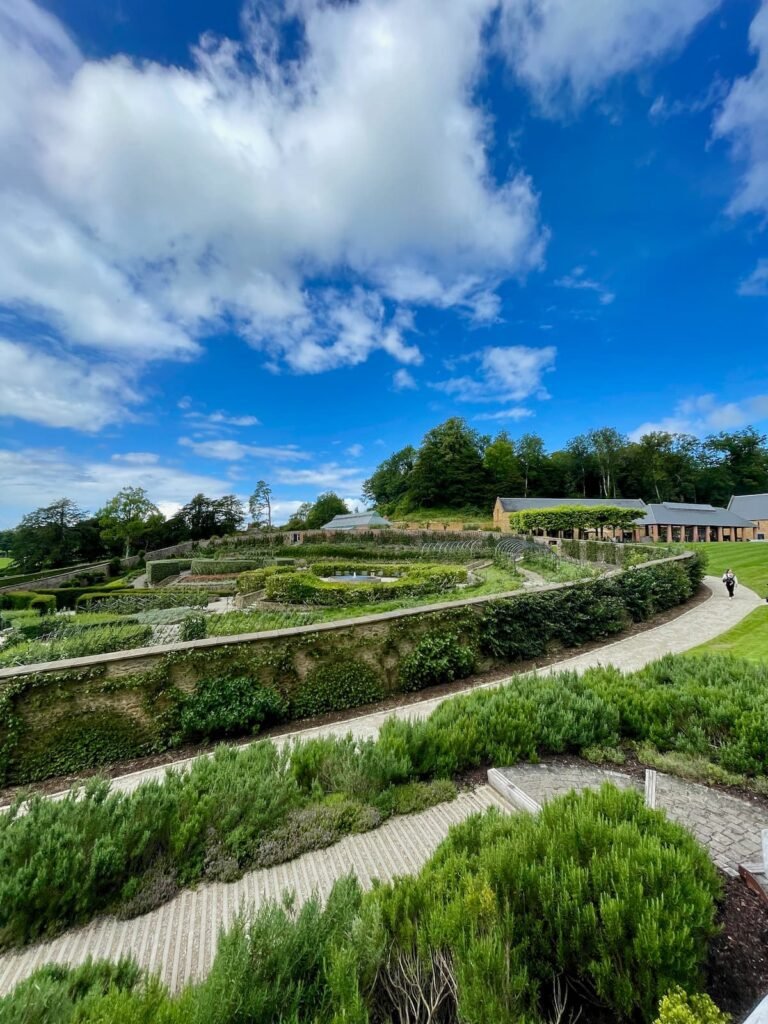
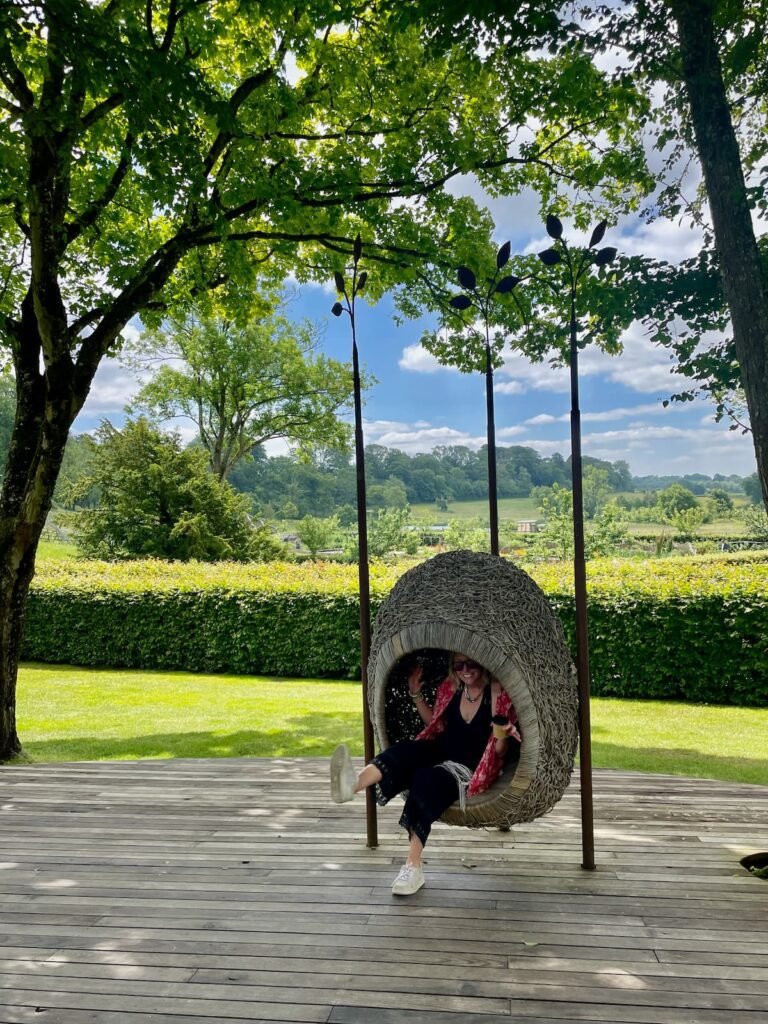
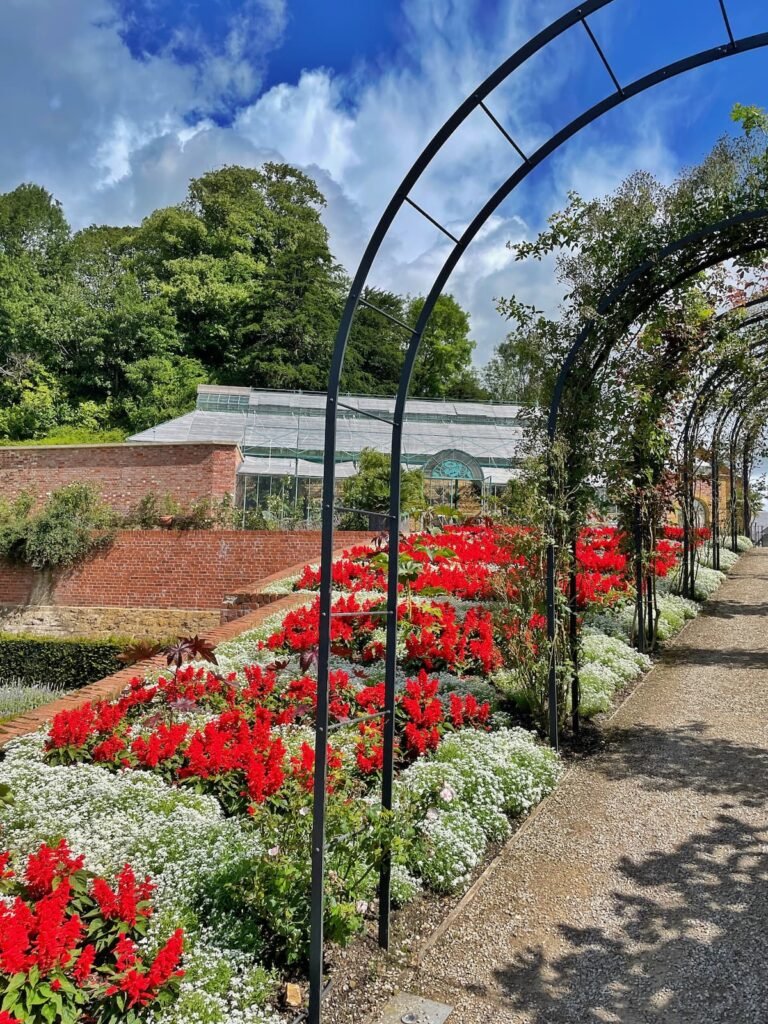

Hauser & Wirth Somerset, near Bruton
Experience idyllic Somerset countryside and architecture on free-range Durslade Farm, home to the world-class contemporary arts centre Hauser & Wirth.
Outside is as much of an art installation as the works you’ll find exhibited inside the gallery. The spectacular Piet Oudolf-designed garden, or ‘Oudolf Field’ topped by the striking Radić pavilion, is a large perennial meadow behind the gallery. Although, calling it a ‘field’ is a bit of a misnomer, as this patch of land has been carefully shaped and planted in curving swoops of plants that reach peak glorious-bloom in summer.
Afterwards, tuck into produce from the farm and walled garden at the onsite restaurant, Roth Bar & Grill (which has its own walled garden located five minutes away at Roundhill Grange), beside an array of vibrant artworks.
The gallery and gardens are free to enter, but they do ask for a donation to their chosen charities and that you reserve a timeslot in advance.
Discover more about visiting Hauser & Wirth gardens of Somerset.

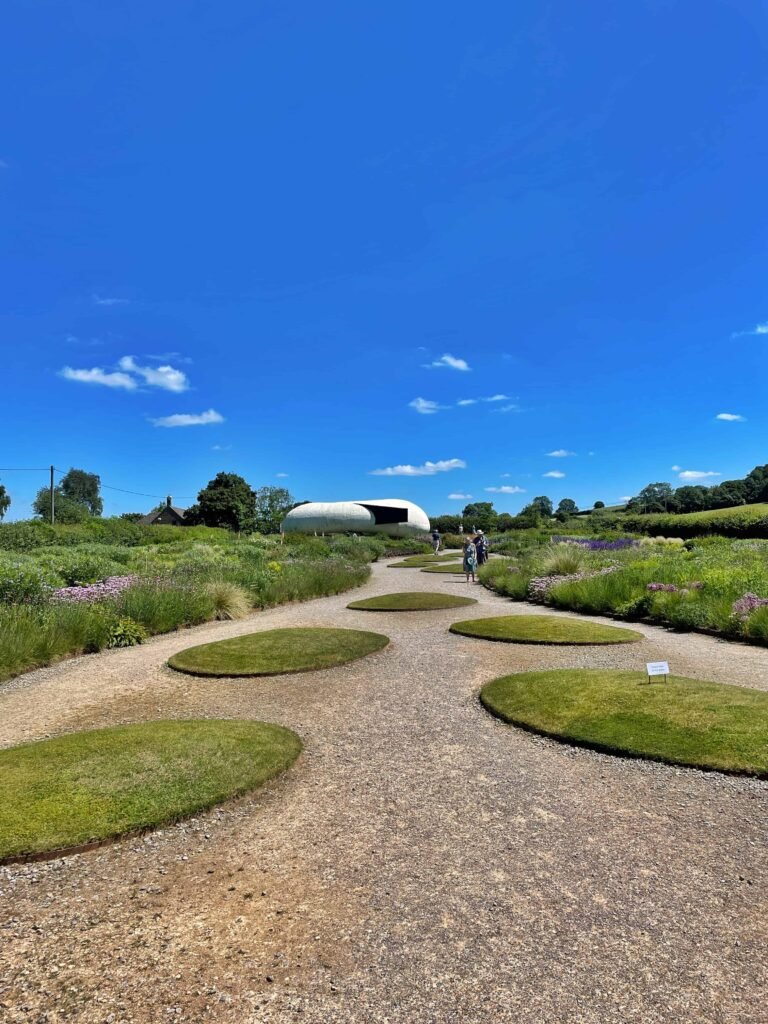
Visit gardens of the National Trust’s Tintinhull
This peaceful 20th century garden complements a 17th century, Grade 1* listed house and is less than an acre in size. Phyllis Reiss was the brains behind the Arts and Crafts style design here, characterised by ‘rooms’. There are 7 such rooms here, separated by walls, hedges, clipped topiary and colourful mixed borders.
A leisurely stroll around the grounds will treat you to secluded lawns, sparkling pools and fountains, a working kitchen garden and orchard.
Check opening times ahead of your visit as the garden is often closed during the winter and on weekdays. A small tea room also serves cakes and teas.
Find out more about visiting Tintinhull Garden.


Hestercombe Gardens near Taunton
Located just outside Taunton, Hestercombe’s magnificent grounds encompass three centuries of gardening history. Here the repertoire ranges from landscaped Georgian gardens which feature a waterfall, classical buildings, wooded valley walks and lake, to a Victorian shrubbery and Edwardian Arts and Crafts-influenced formal gardens.
The 40-acre estate gazes over beautiful rural Somerset countryside and there’s a fantastic cafe, restaurant and contemporary art gallery to boot. Look out for seasonal events such as Bluebell Woods, Summer lates, punting on the pond, outdoor theatre, school holiday activities, workshops and Christmas lights.
Find out more about visiting Hestercombe Gardens in Somerset UK.
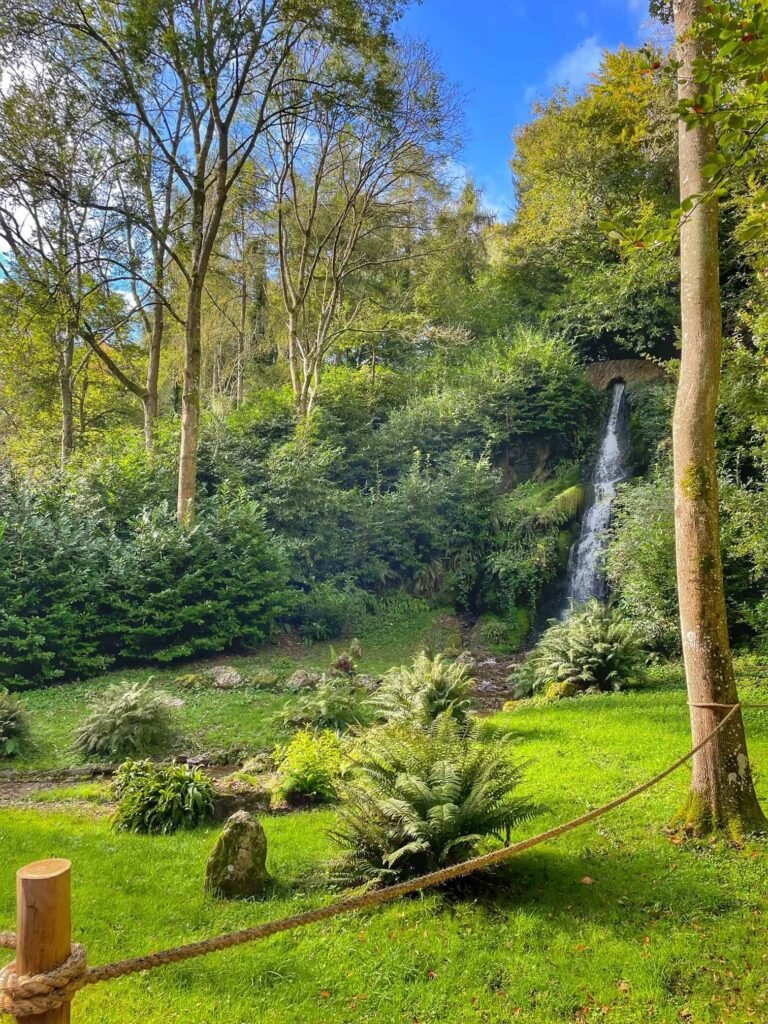

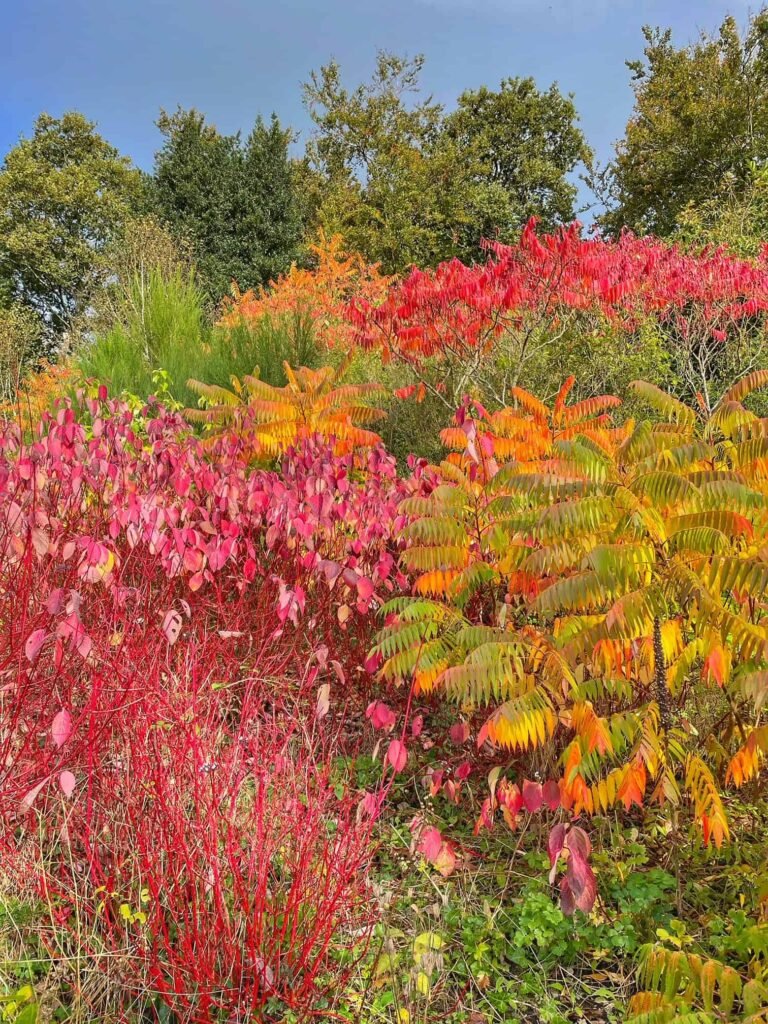
Bishop’s Palace and Gardens, Wells
Sitting beside Wells Cathedral, but no less enchanting, is the beautiful Bishop’s Palace with its 14 acres of gardens and shady well pools (the very waters which gave the city its name), hidden behind a moat and ancient ramparts. Click here to see its role as a recent filming location.
The gardens here are Grade II* listed thanks to their special historic nature – there is evidence they existed before Bishop Jocelyn began building the Palace waaaay back in 1220, with successive bishops leaving their mark over the years.
Today’s herbaceous borders, wide open lawns, specimen trees, knot garden, fragrant blooms, arboretum, community garden and contemporary Garden of Reflection have earnt Bishop’s Palace Royal Horticultural Society ‘Partner Garden’ status.
Kids have been considered too, with the ‘Dragon’s Lair’, a natural outdoor interactive discovery area designed around the themes and stories of the palace, including a pole jungle, tree pods, waterwheel and sluice gates.
Don’t miss Tai Chi in the gardens, plant fairs and garden tours – check their website for details.


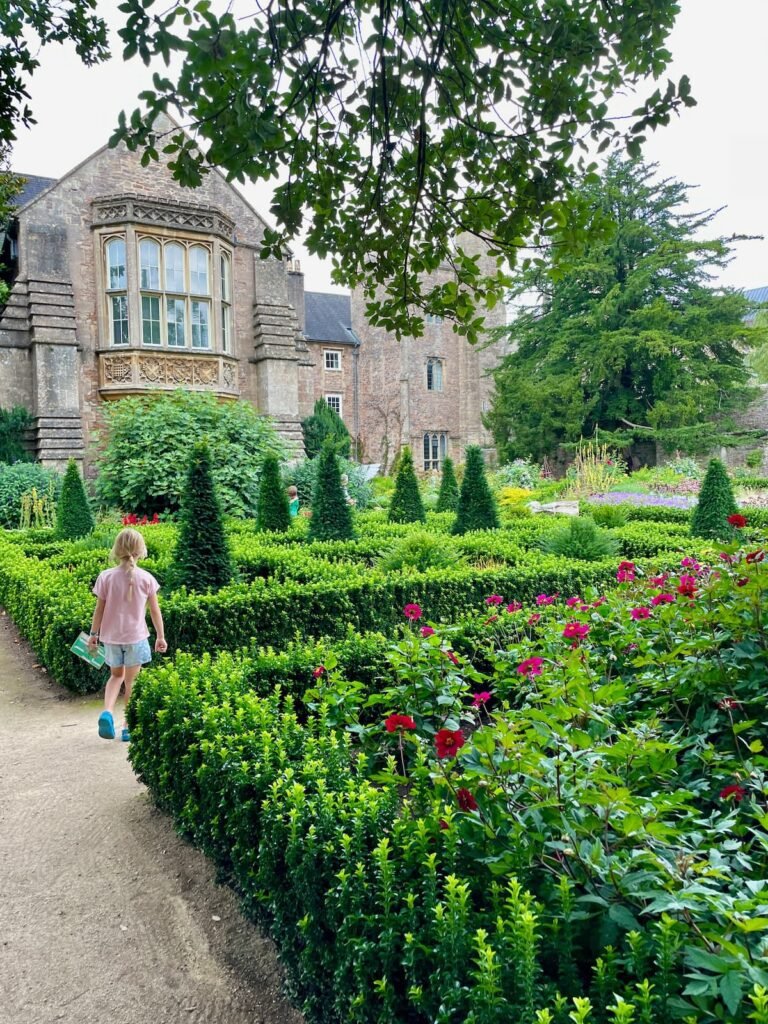
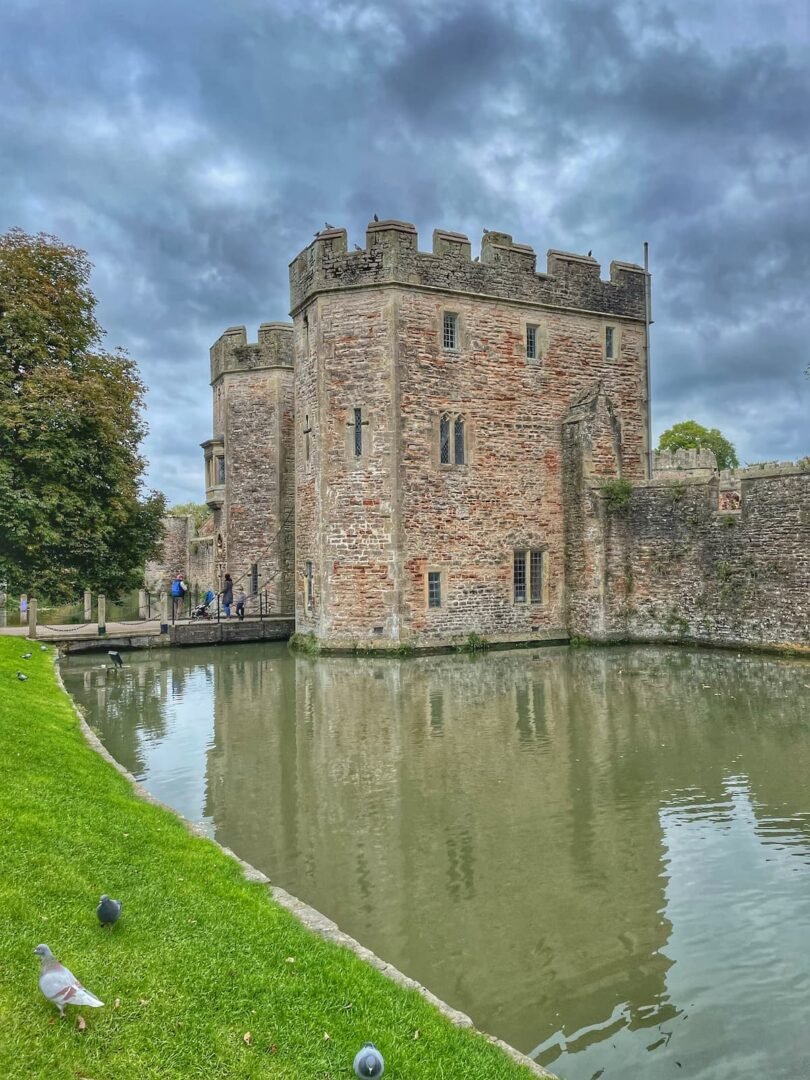
Milton Lodge Gardens near Wells
Open Easter-October
Once sprawled over sloping ground, the gardens of this 18th century house were transformed into a series of terraces at the beginning of the 20th century by Charles Tudway – the current owner’s great grandfather. His purpose? To capitalise on the spectacular views of Wells, the cathedral, Glastonbury Tor and the Vale of Avalon from this vantage point.
One such terrace contains a yew-enclosed swimming pool set at one end of the lawn, another has a lily pond decorated with vibrant flowering pots; all are quite formal and considered in their planting. There’s also an 8 acre arboretum featuring fine old trees with serious trunk girth and a wilder woodland garden. A great green escape on the edge of the city.
Click here for more info on visiting Milton Lodge Gardens.
National Trust Montacute House
It’s tricky to wrap your noggin around the fact that mesmerising Montacute House was offered for scrap back in 1931, before being rescued by the National Trust. A beast of Elizabethan architecture, it was built from gleaming Somerset ham stone and designed to boast the wealth and power of its owners.
Such a fine abode calls for outside space to match and there are some 11 acres of manicured gardens to stroll around, with mixed borders, rose collections, a fountain and ‘wobbly’ hedges. According to NT, only their head gardener worked during lockdown, so no garden tours are running at the moment as it’s not as well-groomed as usual, but it’s heading that way!
Once you’ve finished pottering around the grounds, waymarked walks lead around the wider estate, which encompasses 300 acres of parkland and St Michael’s Hill.
Click here for more info on visiting some of the most famous gardens in Somerset, Montacute House.

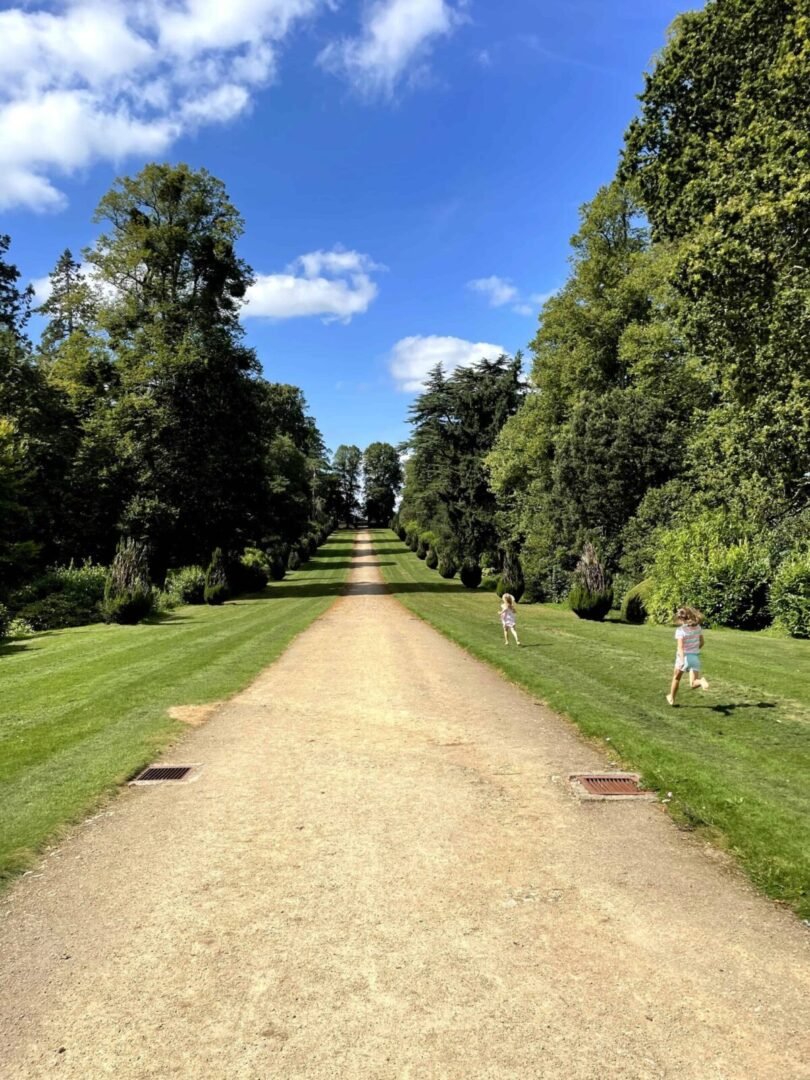
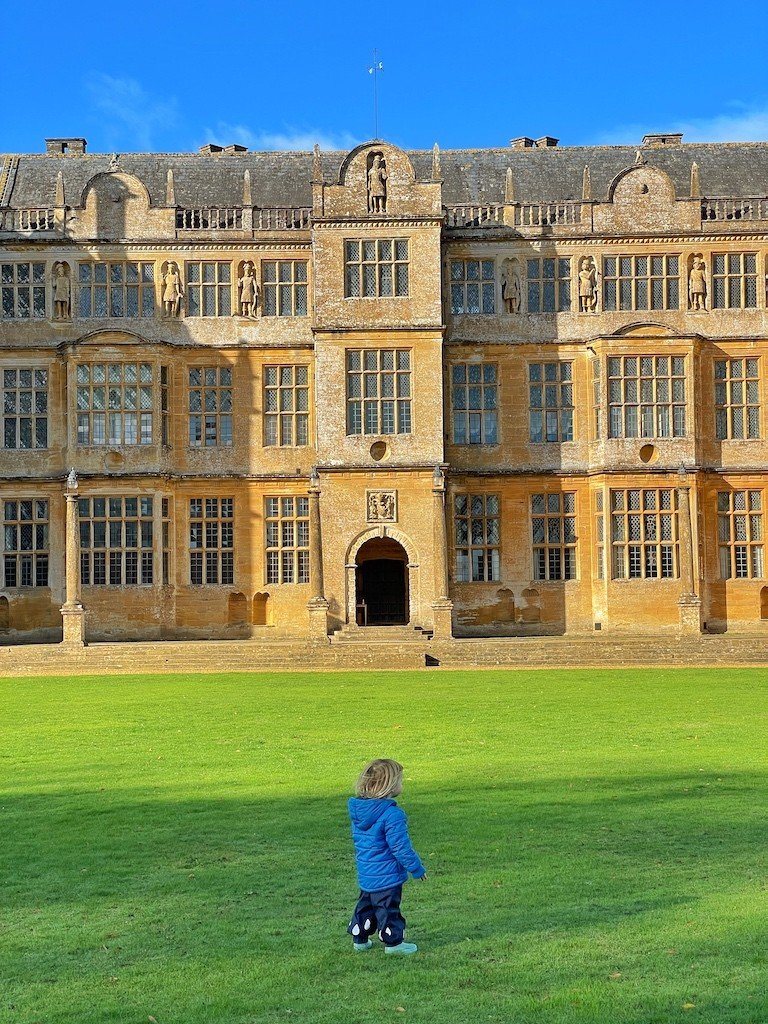

Forde Abbey and Gardens, near Chard
Forde Abbey and its 30 acres of award-winning gardens sit right on the border with Dorset, but is just tucked enough into Somerset for the county to claim it. Since its days as a monastery in the hands of Cistercian monks over 800 years ago, the garden has evolved to reflect the taste of its various inhabitants. One resident, Geoffrey Roper planted more than 350,000 trees on the estate!
The result is a fusion of formal and informal aspects of garden design – colourful herbaceous borders, a chain of ponds (laid out in the 1700s and one of the earliest examples of landscape gardening), meandering paths, an arboretum, rock garden, bog garden, willow den (great for kids), spiral garden and lime avenue.

Try and time your visit to see the Centenary Fountain in the ‘Mermaid Pond’. At around 48m, it’s the highest powered fountain in the country and is turned on at noon, 1.30pm and 3pm for 15 minutes each time (weather permitting). If the wind’s blowing in the right direction, kids will love running in and out of the spray.
The gardens provide year-round interest, but if you’re after some super flower power, petal-tastic times to visit are February Snowdrop Weekends, Crocus Week (early March), the Tulip Extravaganza (mid-April-mid-May) and July for the Spectacular Sweet Peas.
Look out for outdoor theatre events, chickens and ducks wandering the grounds, pumpkin rolling and the chance to pick your own fruit in the grounds. Rare and unusual plants grown onsite are also on sale in the walled garden.
Click here for more info on visiting Forde Abbey gardens near Chard Somerset.

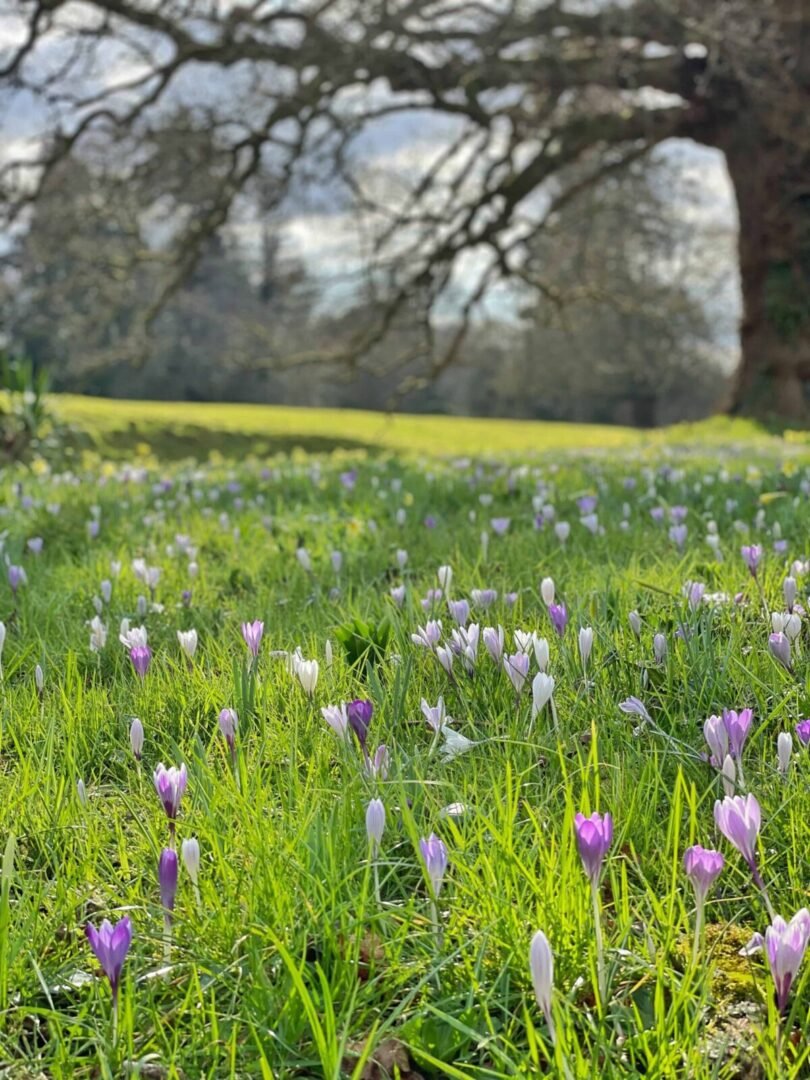

National Trust Dunster Castle
Set in fairytale English surroundings – think olde worlde thatched cottages, tea rooms, cobbled streets and sea views – this ancient turreted castle has been witness to some 1000 years of history from its Tor-top perch. As a result of centuries of building, planning and restoration, the grounds are now renowned for their spectacular views, diversity of plants and features.
Amazingly, a walk around the gardens at Dunster Castle takes you through four different microclimates. Strolling along The South Terrace on a sunny day, you could easily be forgiven for thinking you’d been transported to tropical climes – the area has a Mediterranean feel thanks to its balmy (for Exmoor) micro-climate. Spiky palms line and soar above the pathway, framing views that stretch as far as the Bristol Channel. It’s planted in the Victorian style with spring bulbs and vibrant summer bedding plants painting the terrace with a riot of colour in their respective seasons.

The River Garden is more wild and wooded and its lush, native microclimate seems to make everything grow that much bigger. Redwoods tower over the rustic log play area, while gigantic rhubarb leaves act as unusual umbrellas for visitors at peak summer growth. Look out for the rare Handkerchief tree, grown from seeds smuggled back from Australia in the 1920s by Alys Luttrell.
The River Avil runs through the gardens (made use of by the working water mill – which produces 6 tonnes of flour a year) and it’s great fun to teeter across it on characterful stone bridges. Higher up you’ll find a pet cemetery, bowling green and views, so many breathtaking views.
Click here for more info on visiting Dunster Castle.
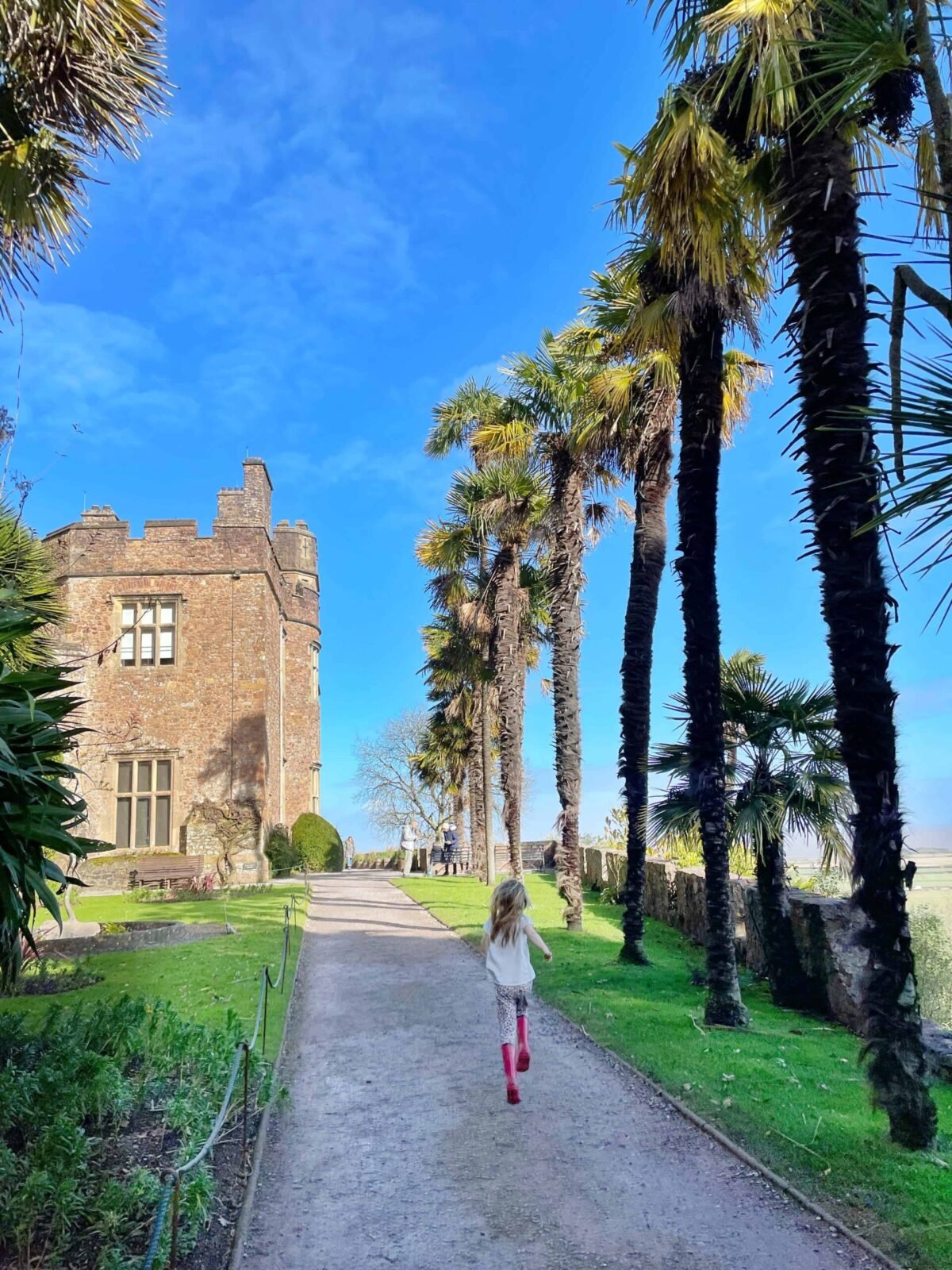


Greencombe Gardens Porlock, Exmoor
Open April-July
This small, captivating woodland garden overlooking Porlock Bay in Exmoor was taken over by Joan Loraine in 1966, and it is her flower prowess that makes the place what it is today.
The 3.5 acre strip is packed with stunning, rare plants that have been deliberately planted to give a natural appearance. It’s also completely organic, using home-produced compost and leaf mould to tend to the four national plant collections; Erythronium (small mountain lilies), Polystichum (the thumbs-up fern), Vaccinium (Wortleberries) and Gaultheria (Berries for Bears).
Click here for more info on visiting Greencombe Gardens.
East Lambrook Gardens
Open February-October
The gardens of this 15th century manor house in East Lambrook aren’t huge (just under 2 acres), but the amount of flower power that’s packed into them is quite something. Created by celebrated 20th-century plantswoman Margery Fish from 1938 to 1969, the gardens are considered to be the home and prime example of quintessential English Cottage gardening. Think winding paths through colourful, scent-heavy borders and old-fashioned blooms mingling with contemporary plants to create a charming outside space.
May, June and Autumn make for eye-popping times to visit but February is the real show-stealer here, with a month-long festival devoted to snowdrops, of which there are some 150 varieties! There are also Geranium and hellebore collections of note, a specialist plant nursery, tea shop and art gallery.
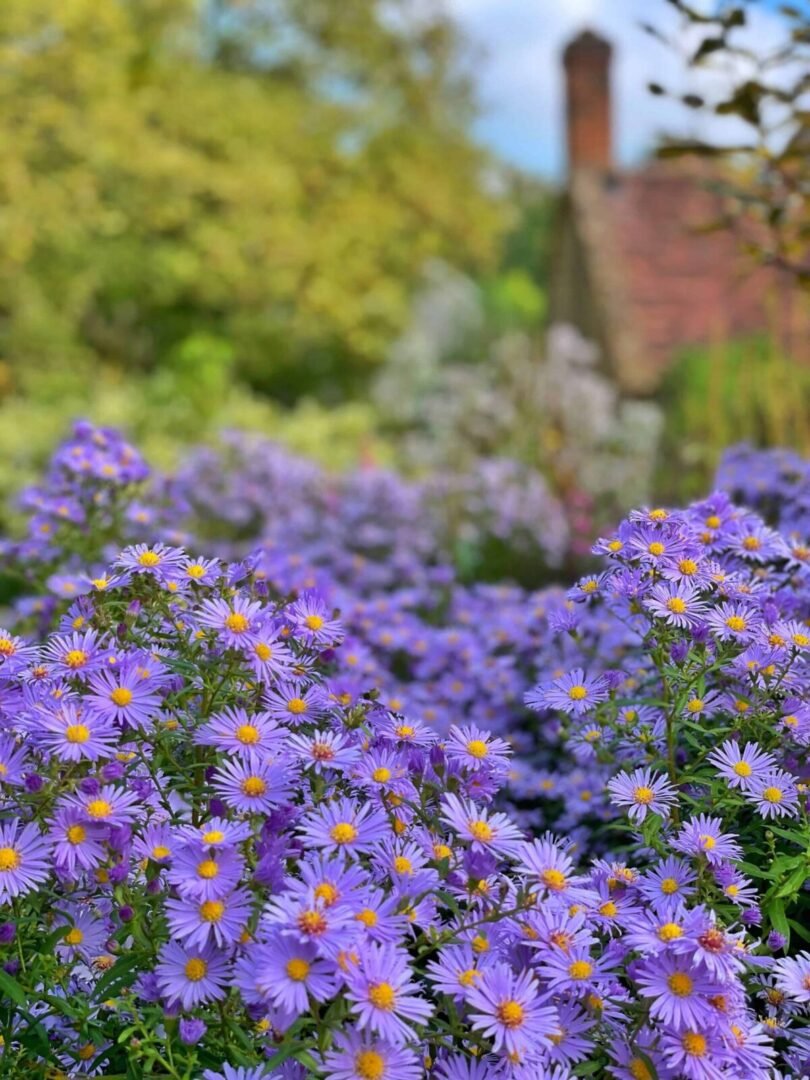

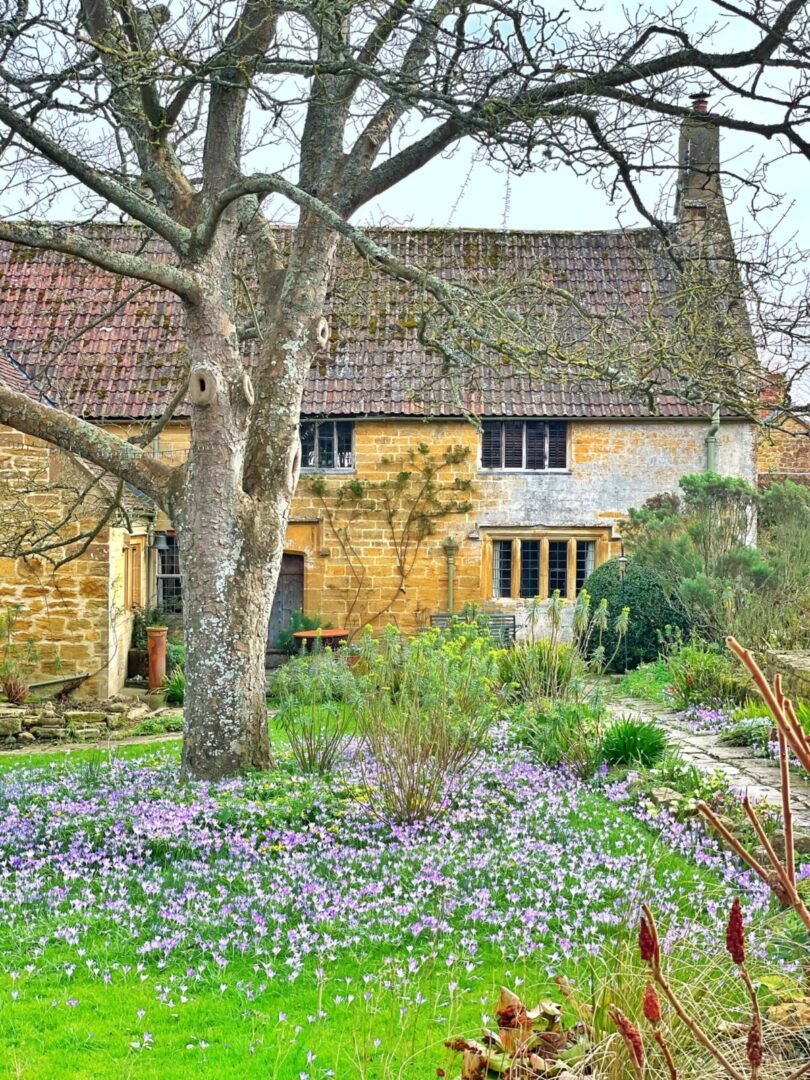


Frogmary Farm, South Petherton
Frogmary Green is a working farm with a lovely cafe, beauty spa, florist, wildflower meadow (in summer) and wedding/event venue space. On the garden side, meandering paths are set around a lake, with a small wooden play area for the kids and an amphitheatre-like grassy hill (that is just crying out for outdoor theatre performances in my opinion!) It’s not huge, so you might want to walk round a couple of times, or if you’re after a longer stroll, there are rural countryside walks nearby.
The cafe is dog-friendly and extremely popular, so if you’re want a spot of brunch you’ll need to book ahead (the outdoor table next to the wood burner is the best I reckon).

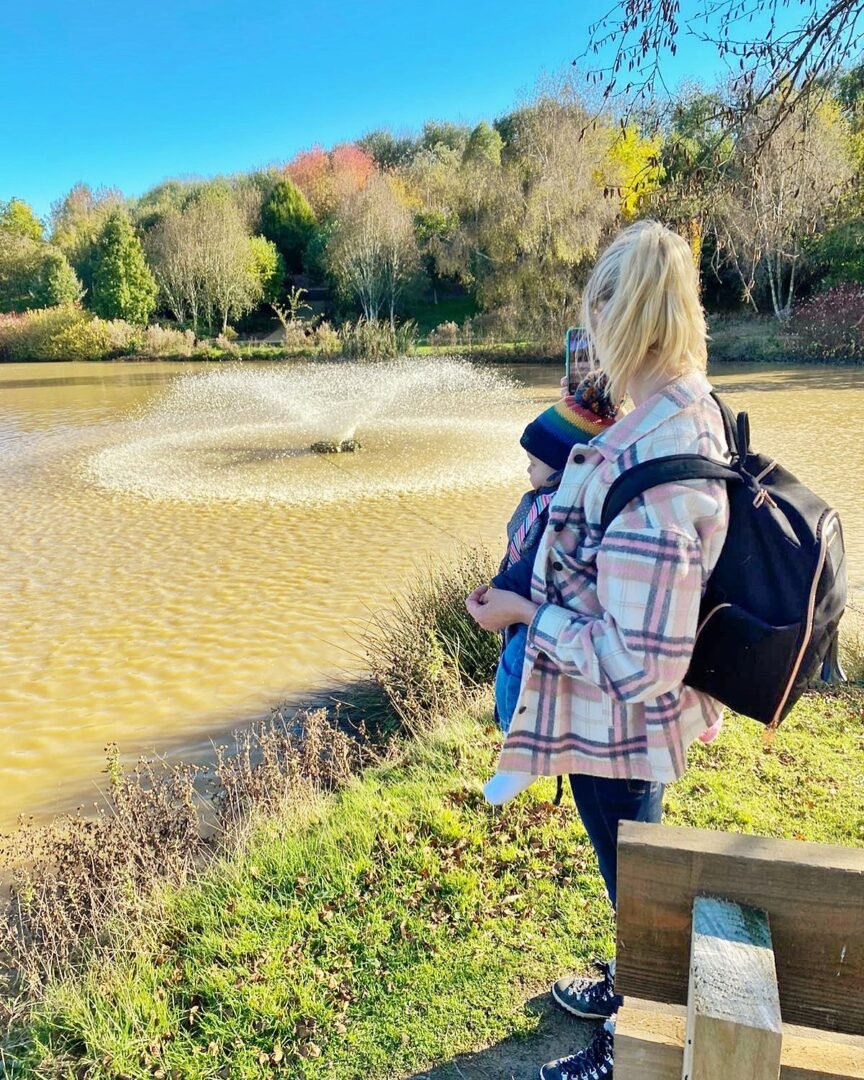
Barrington Court
Located next to the picture-perfect village of Barrington, this stately home was one of the first to be owned by the National Trust. Surrounding the handsome house are Grade II* listed gardens that include a pond, wide avenues and picturesque gardens laid out by Gertrude Jekyll in the Arts and Craft style, plus a walled kitchen garden and orchards.
In summer the gardens are a rainbow riot of blooms, from red rose-bordered ancient stables to an entire garden dedicated to white-petalled plants, an iris garden and a lily garden- it’s a veritable flower feast for the eyes!
Tumbling wisteria dominates in spring, while autumn sees the likes of ‘hinky punks’ descend on the estate, gorgeous golden hues, apple picking and nature-inspired crafts.
Click here for more info on visiting Barrington Court.
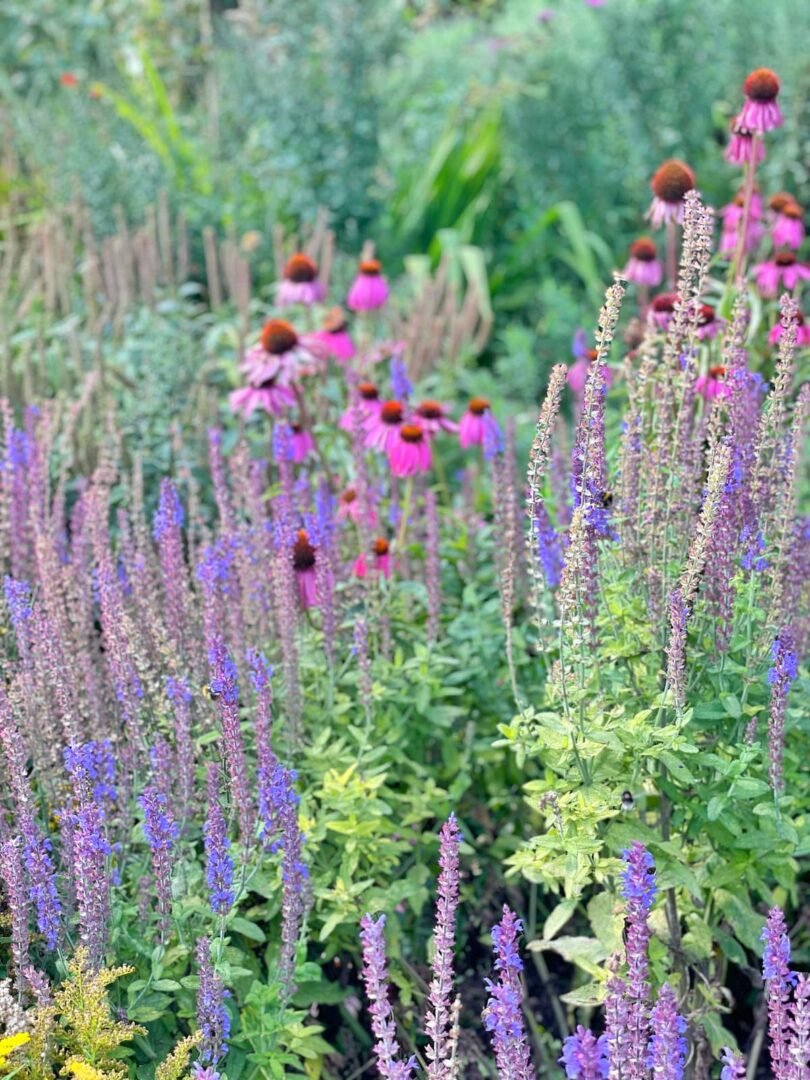



Lytes Cary Manor
The name of this estate derives from the ‘Lyte’ family, who lived at the manor house for over four centuries, and the River ‘Cary’ which flows nearby. The house, which is made up of a mish mash of parts dating from the 14th to 20th century, is surrounded by enchanting ‘arts and crafts’ style gardens separated by yew hedges and stone walls, each reflecting a different mood or purpose. There’s also a formal orchard, acres of fields and some lovely woodland.
Home to Henry Lyte in the 1550s, this keen herbalist and gardener grew all kinds of fruit in the grounds, although once the family sold the estate in 1755, much of the garden disappeared and was farmed right up to the house. Since then the Jenners and National Trust have transformed the gardens and, going forward, there are plans to renovate the pond and reinstate the romantic orchard as seen in historic photos of the place.
Lytes Cary is a great day out for kids thanks to its forest trail, where they can log-hop, swing from the branches and seesaw on logs. Afterwards, picnic upon the lawns and marvel at the beautiful floral borders and neatly-clipped topiary.
Click here for more info on visiting Lytes Cary.
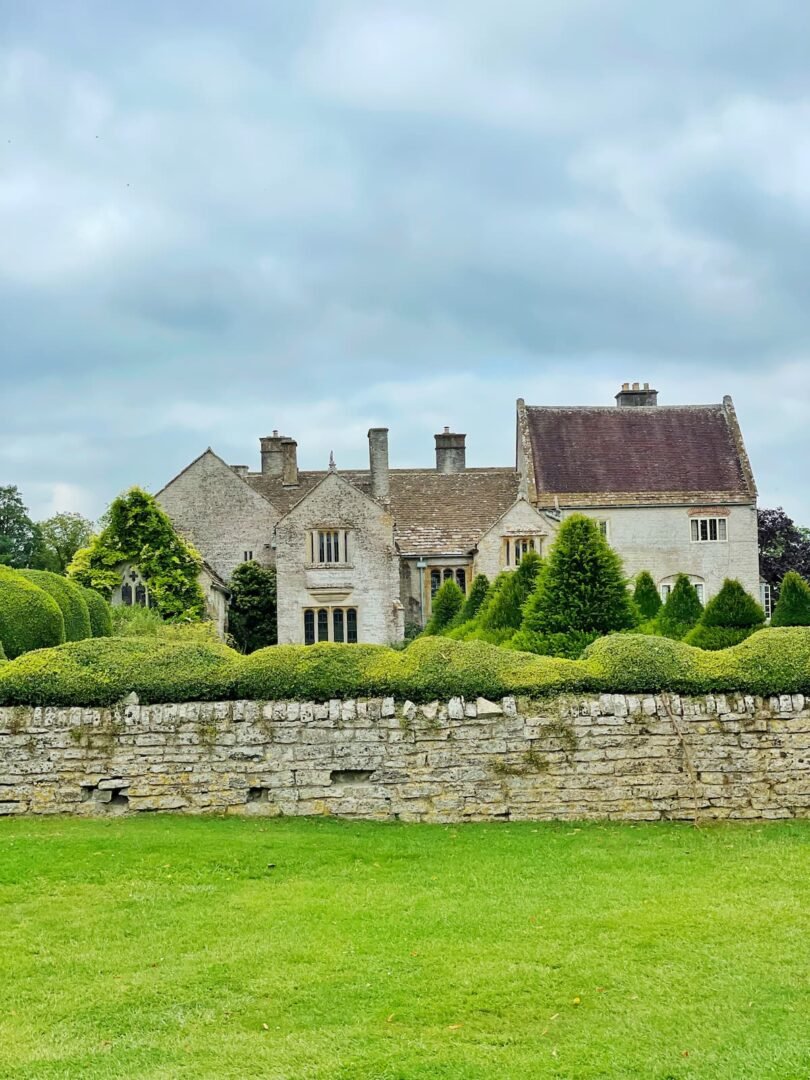
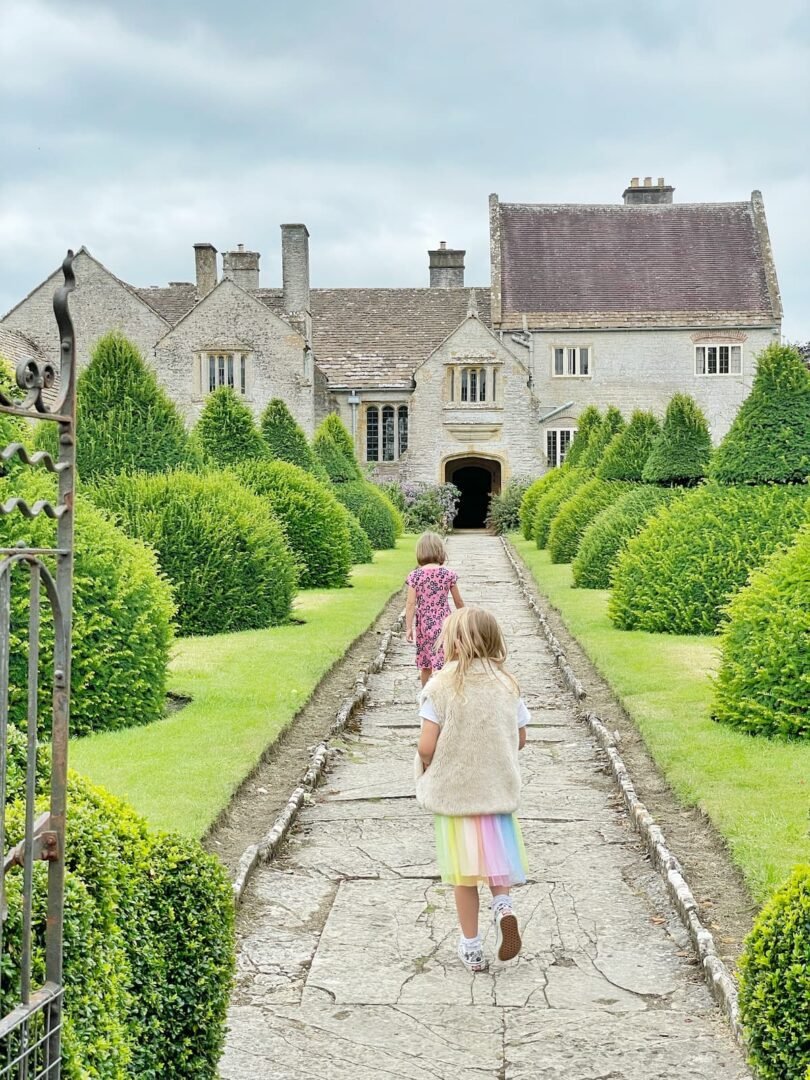

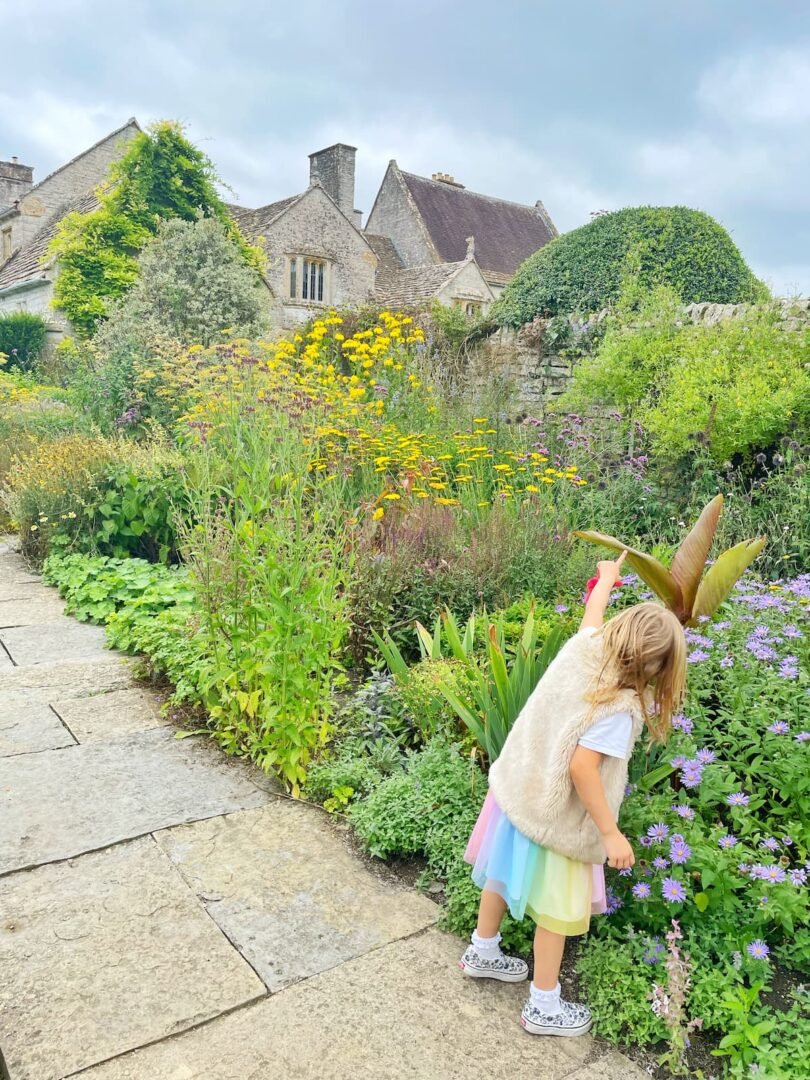
Chalice Well, Glastonbury
Located at the bottom of Glastonbury Tor, The Chalice Well (also referred to as the ‘Red Spring’ or ‘Blood Spring’ due to the red iron deposit the water leaves behind) is a World Peace Garden, sacred site and one of the best known ancient holy wells in Britain.
A haven for people seeking healing and peace for over two thousand years, many legends are attributed to its waters. One such myth supposes that the copper-tinged stream represents the blood of Christ, miraculously springing from the ground when Joseph of Arimathea buried or washed the cup used at the Last Supper here.


A sign at the entrance encourages visitors to turn off their mobile phone (although pictures may be taken) and you’ll find people making the most of this peace, meditating in a yogic stance by the water or in quiet contemplation on various benches tucked into pretty nooks.
The garden, while small (it doesn’t take long to walk around), is separated into ‘rooms’ with winding paths leading off into different areas. The highlight is the lawn with the stream running through it, which my toddler would have spent the entire day splashing in. Make sure to dip your own feet or even taste the waters from the Lion’s Head drinking fountain.
Click for more info on visiting Chalice Well, Glastonbury.
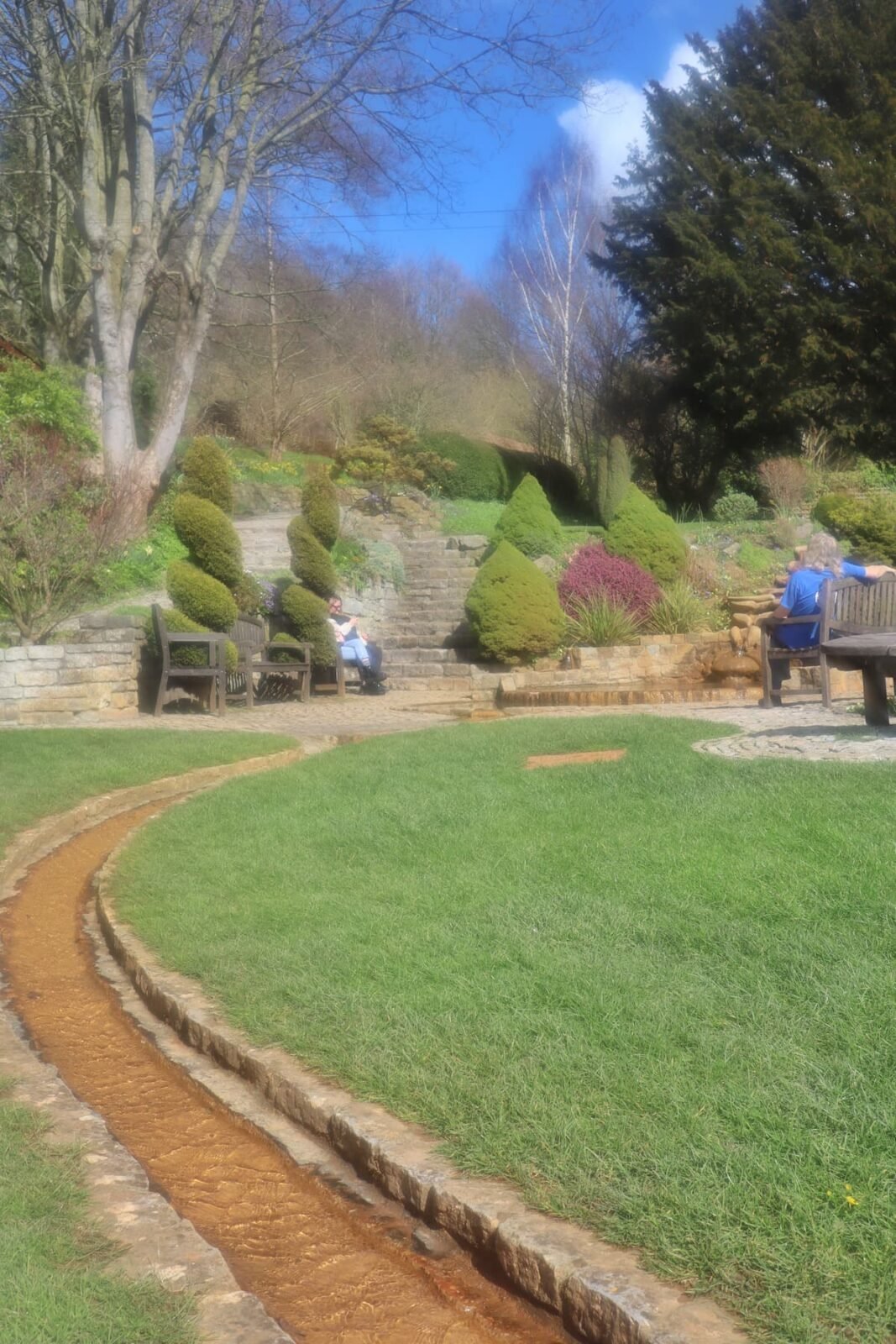

Somerset Lavender, Radstock
Open Weds-Sun, May-September
One for the Instagrammers! Somerset Lavender farm is home to 5 acres and over 20 varieties of lavender (with another 5 set to be planted). During the summer, the rows of deep purple flowers, humming with bees are a sight (and scent!) to behold.
Once you’re done swishing through the hazy indigo fields, there’s a healing garden full of useful herbs to explore, a flower and vegetable garden, charming cafe and a shop where you can stock up on lavender-themed gifts, honey made onsite and more.
Entrance to Somerset Lavender Farm is free but there is a donation box at the main gate. Pooch owners will be pleased to learn it’s dog-friendly too.
Yeo Valley Organic Garden
Open Weds, Fri, Sat from end April-September
You’ve eaten the yoghurt, sloshed their milk in your tea, now go and see where the Yeo Valley magic happens! In a picturesque spot overlooking Blagdon Lake, Holt Farm’s six and a half acres of ornamental organic garden (one of only a handful in Britain) sit alongside the Yeo Valley dairy, founded 35 years ago.
You’ll find edible and ornamental plants in a seasonal patchwork, wildflower meadows, a grass garden, pond, meandering stream, gravel garden and a beautiful Tea Crabapple tree avenue (especially lovely when blossoming in May).
For extra enjoyment, soak up the Mendips views and vibrant blooms of this North Somerset garden with coffee and a cake from the Garden Tearoom.
Click here for more info on visiting Yeo Valley Organic Garden.
Walled Gardens of Cannington
Lying within the grounds of a medieval Benedictine Priory which dates back to 1138AD, these gardens, used by Bridgwater and Taunton College students, have undergone extensive redevelopment in recent years.
Classic and contemporary features can be seen, including a herbaceous border, blue garden, botanical glasshouse, sub-tropical walk, winter garden, potager, wisteria collection and a Victorian-style fernery. Two smaller gardens within the walls (The Bishop’s and Southern Hemisphere Gardens) are especially peaceful spots to while away part of your day.
The gardens also have a tearoom, plant nursery and gift shop. Look out for outdoor theatre events for adults and children throughout the summer (normally advertised via Facebook).
Click here for more info on visiting the Walled Gardens of Cannington.
American Museum and Gardens, near Bath
Delve into the history of our friends across the pond at Georgian mansion, Claverton Manor. From Native Americans, to cowboys, gold miners and pioneers, inside the manor is brimming with incredible artefacts telling stories of Americana from the first settlers up to the 20th century.
And the American history lesson doesn’t end there, outside in the manor’s 30 acres of grounds, you can walk into a replica of George Washington’s garden at Mount Vernon, a Lewis and Clark trail, and an Arboretum. Remnants of the old Italianate style manorial pleasure gardens and parkland, dating from the 1820s, can also be seen, including period features such as the grotto, the balustrade, curtain walling and ornamental stone work.
Why not grab a snickerdoodle and cup of Joe from The Orangery Cafe, take a wander in the gardens and marvel at the seriously beautiful views across the Limpley Stoke Valley. Click here for more information on visiting the American Museum and Gardens.


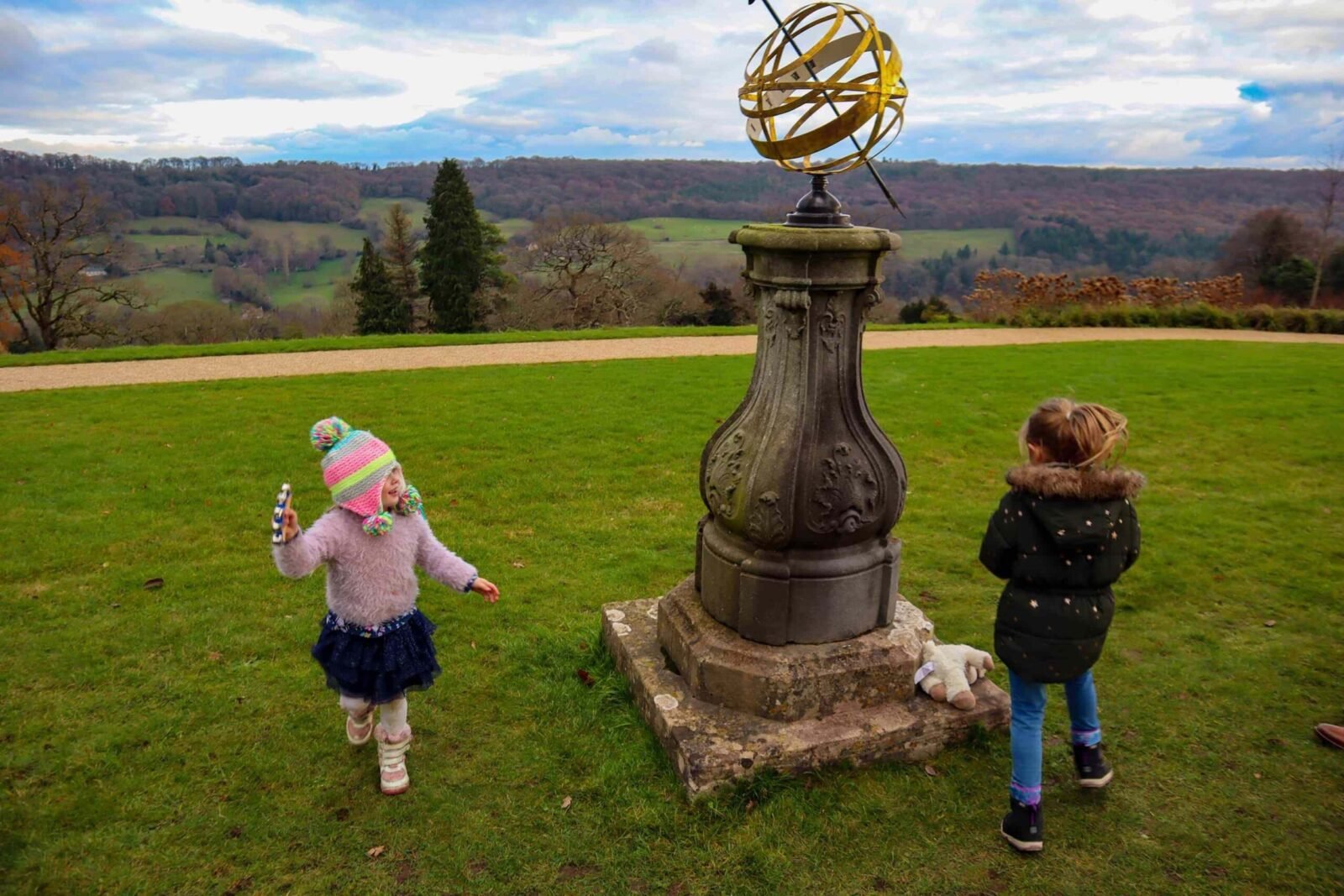
Prior Park, Bath
Prior Park was built in the 18th century by Ralph Allen, a Postmaster of Bath who became integral to the development of the British postal system. From humble beginnings, Allen rose to be one of the wealthiest men in Britain and with his riches he built a mansion with magnificent grounds and spectacular views of the city – Prior Park.
The gardens of Prior Park are set in a sweeping valley and were created in collaboration with famed landscape designer, Lancelot ‘Capabliity’ Brown with input from the poet Alexander Pope. Various follies, grazing animals, a serpentine lake, sham-style bridge and fascinating architectural features can be found, but the showpiece at the heart of the grounds is a stunning Palladian Bridge, one of only four left in the world.
There’s plenty to explore within the gardens, but for even more epic vistas, you can connect from Prior Park to the Bath Skyline walk.



The Walled Garden at Mells
Open April-September
The Walled Garden at Mells began life as the garden supplying Mells Rectory, which was then demolished in the 1540s during Henry VIII’s dissolution of the Monasteries. Today, you can enjoy the wonderful views over a pasture and meadow from the rose terrace, stroll past olive, bay and fig trees, see vibrant borders and locally-made ironwork garden sculptures, or sample the café’s Mediterranean menu including gelato and oven-baked pizza.
This small, rural walled cottage garden started life as a monastic garden for Mells Rectory in the fifteenth century, when the village formed part of Glastonbury Abbey estate. After the dissolution of the monasteries in the 1540s, the Rectory was pulled down and some of the stone was used to build Rectory Cottage, next to the garden. Set in an acre of grounds, one half of the delightful rambling garden is made up of a rose terrace, olive bay and fig trees, bright borders and locally-made ironwork and garden sculptures, while the other is a non-profit community nursery which specialises in cottage garden perennials, herbs and seeds.
Enjoy wonderful views over a meadow, grab a cuppa or a slice of pizza from the cafe, or take a gardening masterclass.
National Trust Tyntesfield, Wraxall
Almost unchanged since 1900, the gardens of the handsome Victorian Tyntesfield estate – some 540 acres of beautiful gardens, parkland, woodland, vast open lawns and manicured gardens – offer far-reaching views over rolling North Somerset countryside.
Year-round family-friendly events and trails help lead visitors around the grounds, through the rose garden, past a pristine croquet lawn, into a produce-rich kitchen garden, and alongside terrace beds which see some 10,000 plants burst into colour come summer.
Topiary-lined walks, an arboretum for rare trees, the annual carpet of wild garlic, wildflowers, blossoming wall-trained fruit trees, autumn pumpkins and formal displays of spring bulbs, crocuses, roses, daffodils and tulips are all fabulous to see.
Be sure to check out the extensive kitchen garden (whose produce can be found in the onsite restaurants) and the impressive neo-classical orangery.

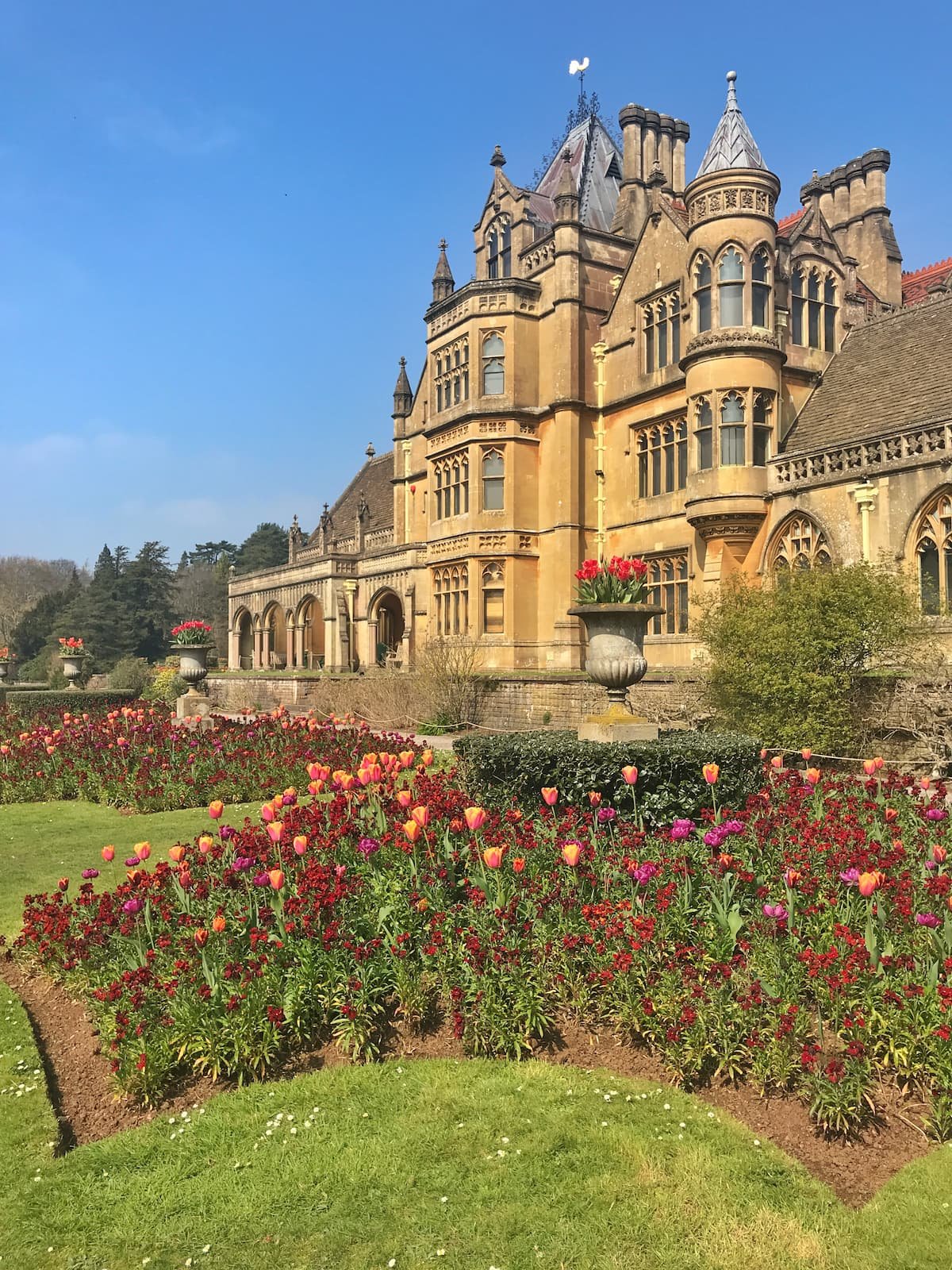
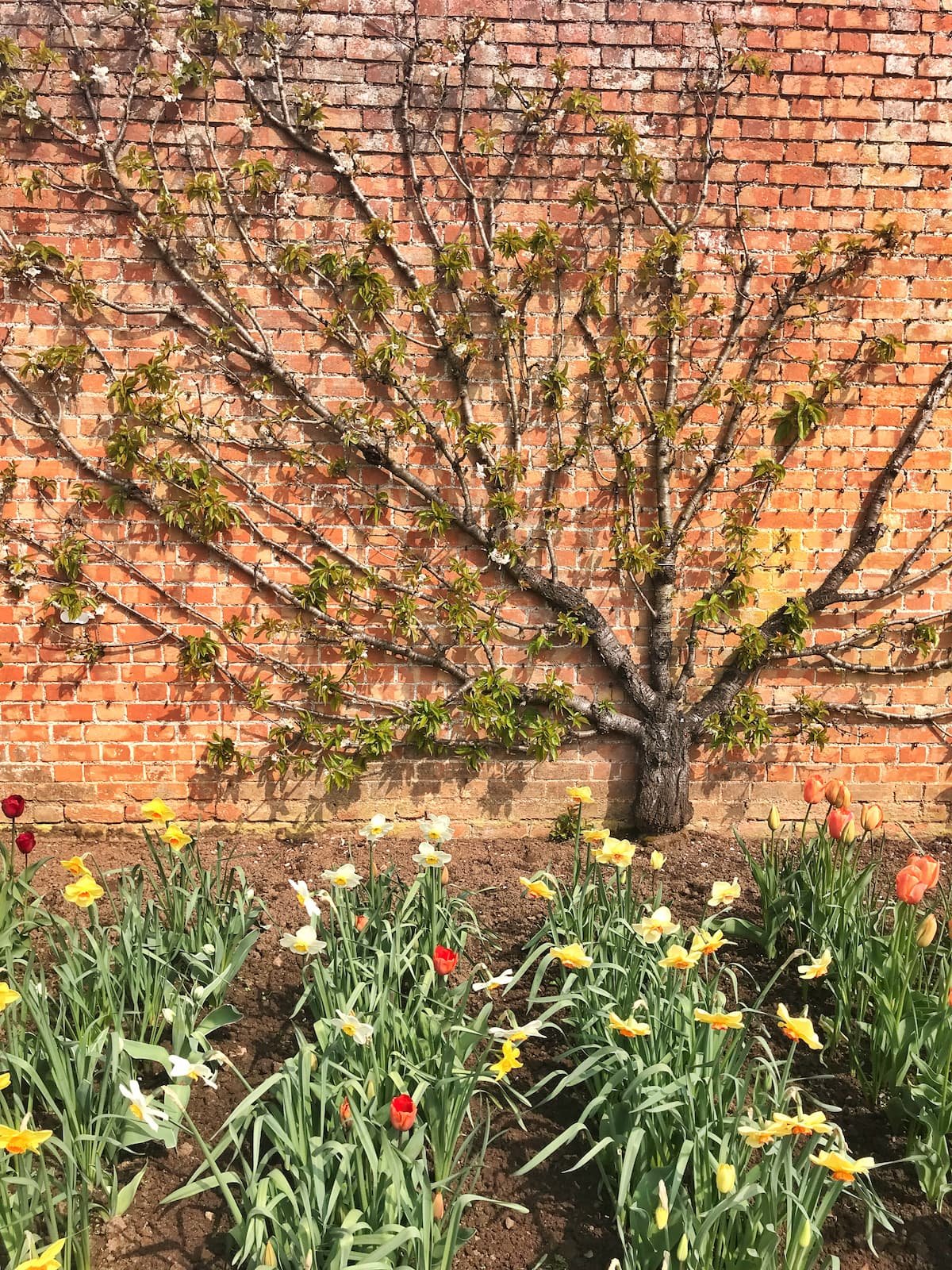


University of Bristol Botanical Gardens
The University of Bristol Botanical Gardens, tucked away just a few roads back from The Downs tend to fly under the radar. Long-standing locals often haven’t heard of them (I went to the University of Bristol, lived in halls right next door and didn’t know they were there until about 15 years later). If you’re one of these people, you’re missing a treat!
Entering this gorgeous little nature oasis is like walking through several different worlds; from tropical climes, to a land before time and classic English country garden all in one place. Their collections range from local flora, to Evolutionary (with plants dating back 200 million years) and Mediterranean, to the warm temperate zones of South Africa and Australia.
Hunt down a dinosaur skeleton under lush palms, spot sculptures, seek out a secret garden door, discover medicinal plants, an African Rondavel, gigantic aquatic plants in a raised tropical pool, many beautiful flowers and revel in the peaceful vibes.
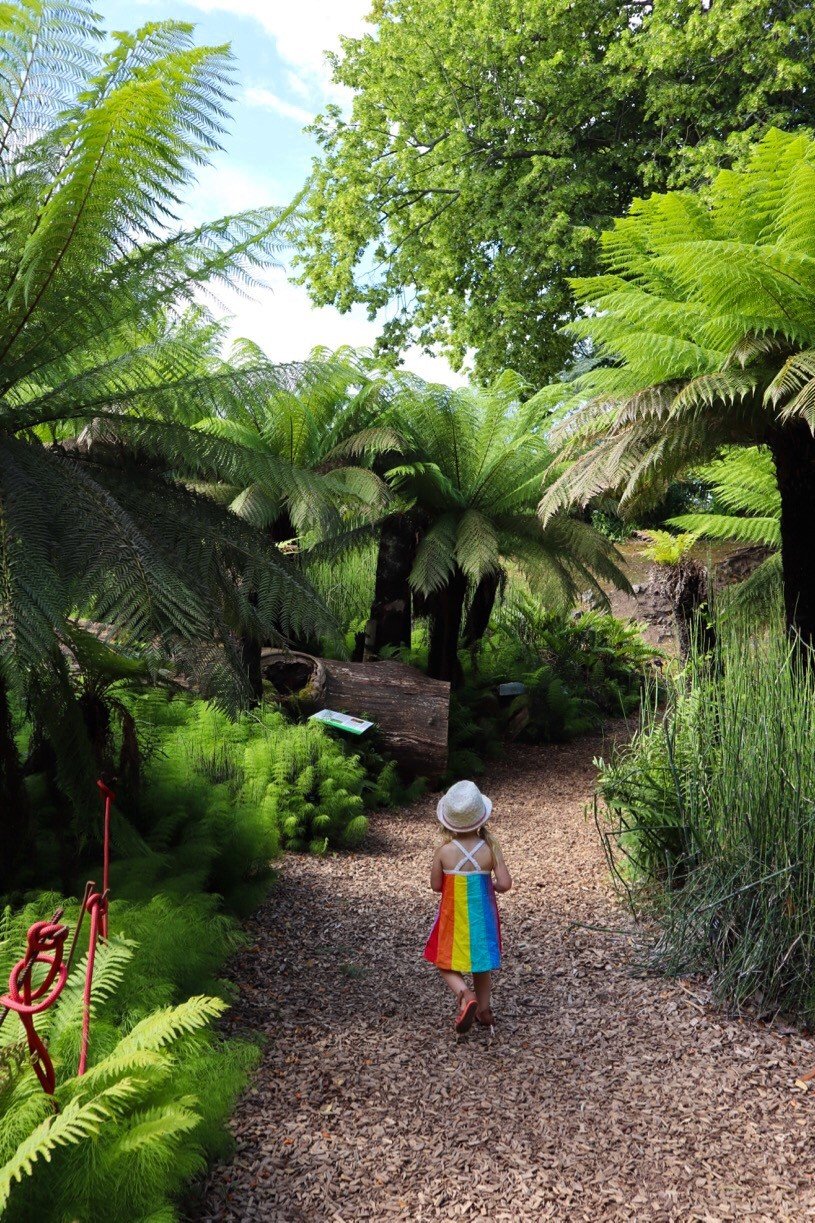
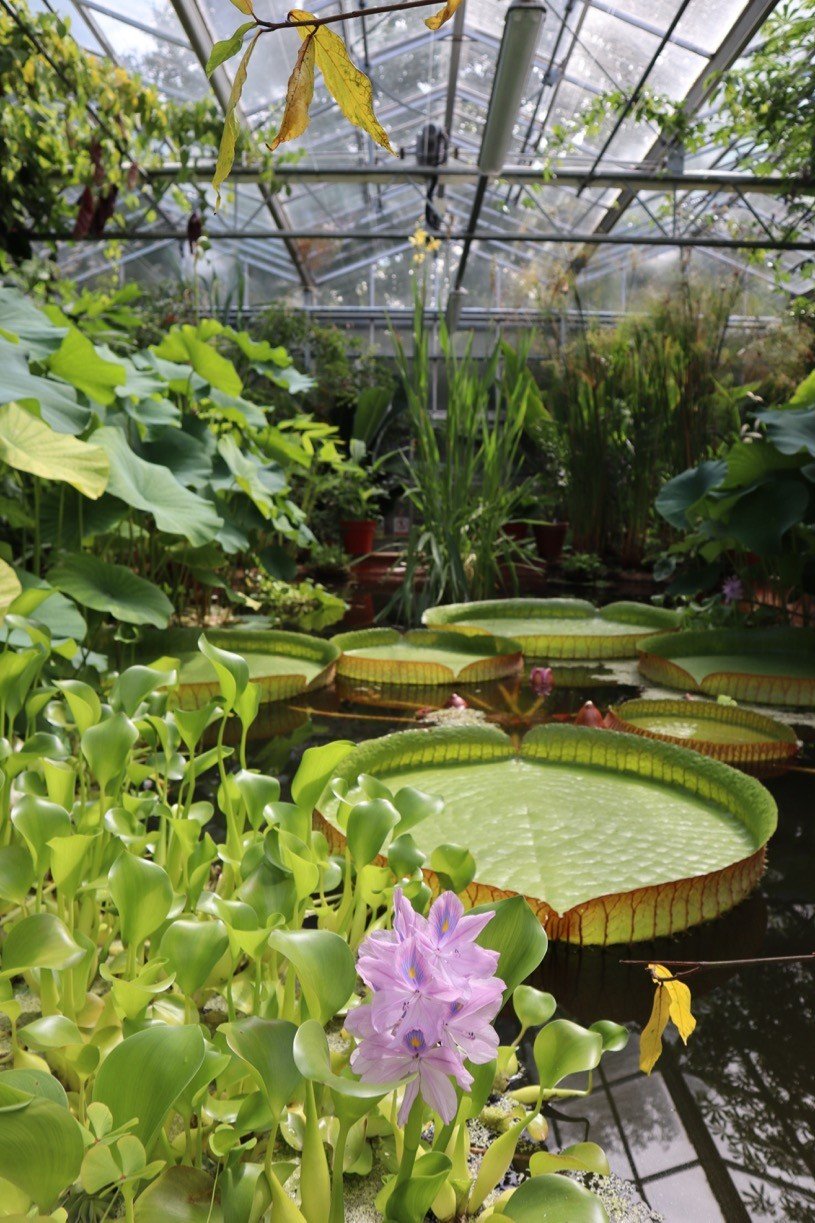
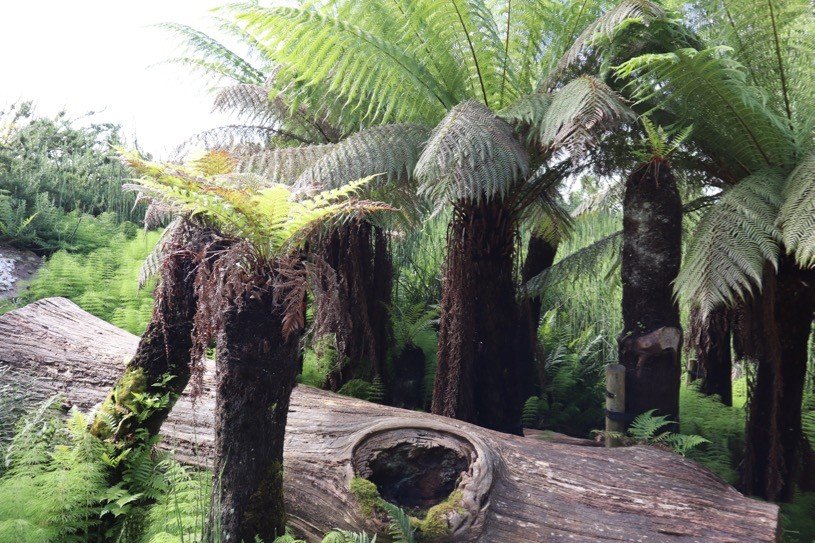

National Open Garden Scheme: Somerset gardens open for charity in 2025
Can’t get enough Somerset garden gandering? The National Garden Scheme gives visitors unique access to over 3,500 exceptional private gardens in England, Wales, Northern Ireland and Guernsey, while raising money for nursing and health charities through admissions, teas and cake.
Kilver Court and Gardens
Kilver Court and Gardens in Somerset were designed by George Whitelegg, a multi-gold medal winner at the Chelsea Flower Show.
The 3.5-acres of landscaped gardens are great for a potter and fun for preschool age kids as there are millponds and waterways to explore, ducks to quack at, a Mulberry tree planted by Princess Anne and a striking 19th-century viaduct backdrop. Adults £7.50. Entry is FREE for children under the age of 7.
At the moment only Toast and Mulberry have outlet shops here, but there is a lovely little pop-up ‘Wiggly Cafe’, but in Spring 2025, they’re relaunching with some new retail units and a restaurant. If you’re headed here in summer with kids, you could combine with Shepton Mallet Lido.
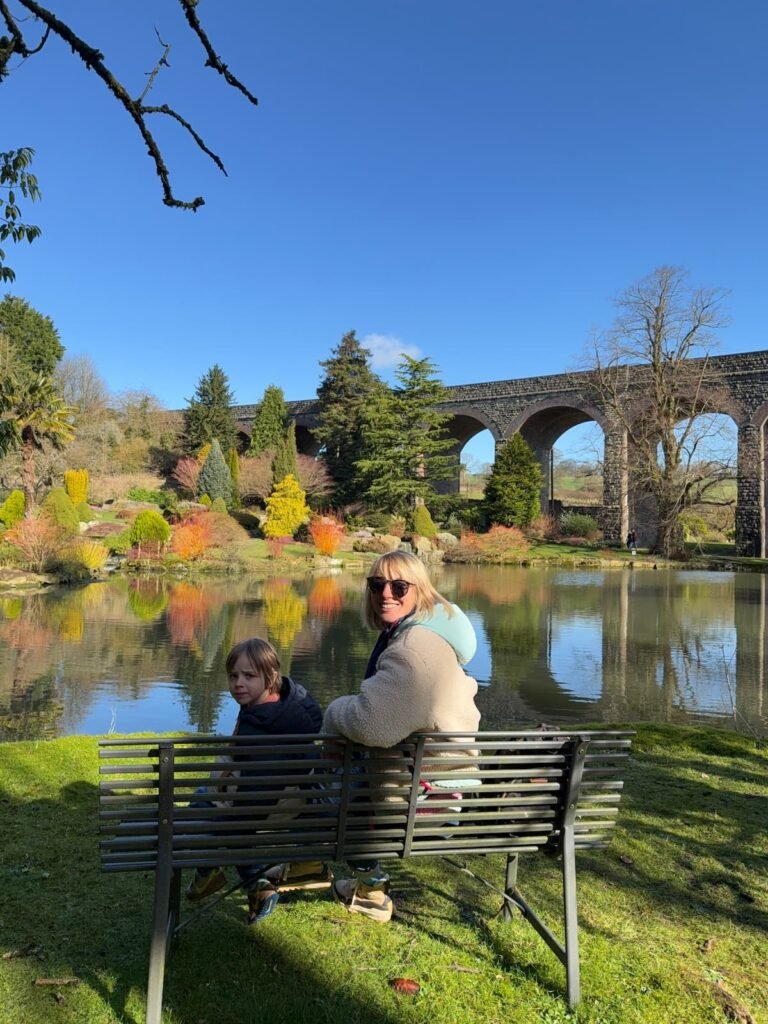

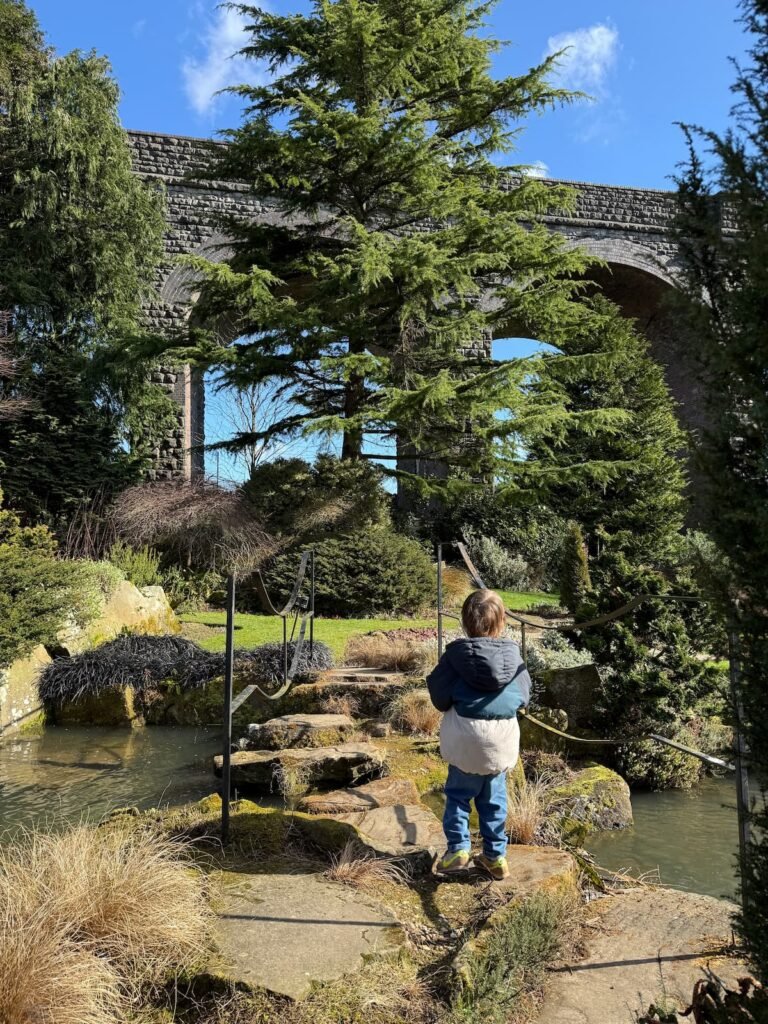
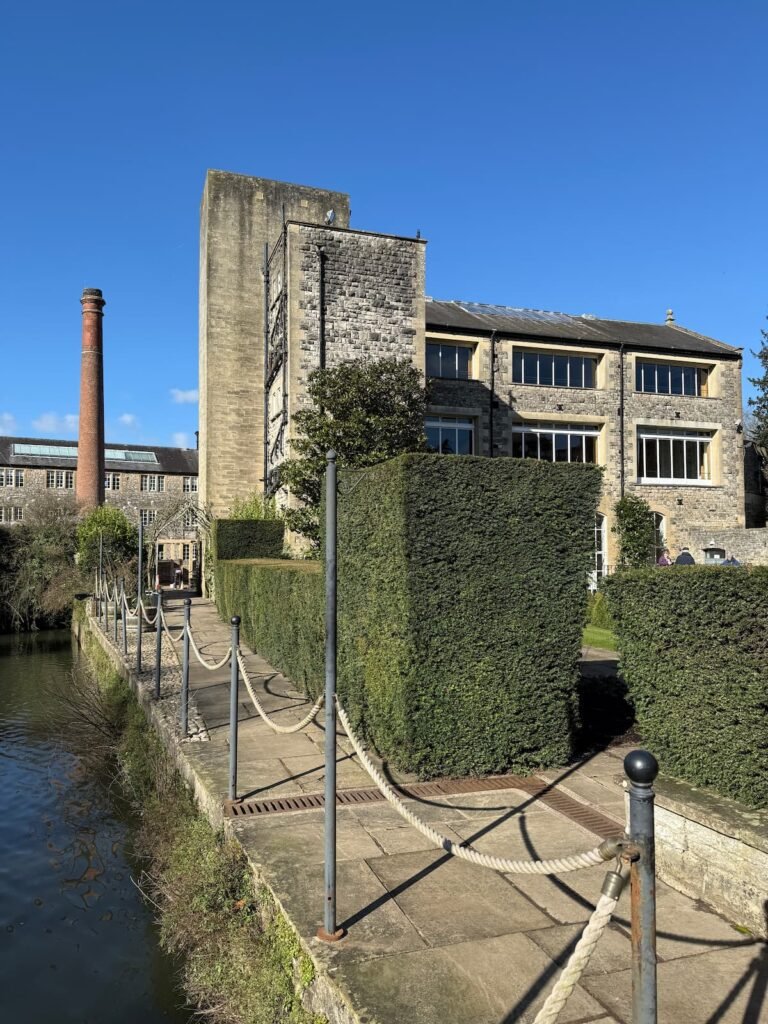
Down Somerset Way is a free online resource designed to help you plan your Somerset adventures. If you’ve found it helpful, you can show your support by buying me a coffee. Thank you!
Liked this post on the best gardens to visit in Somerset? You might also like:
Places to visit in Somerset: best attractions
Pick your own flowers, fruit and veg in Somerset
Beautiful Bristol gardens you need to visit




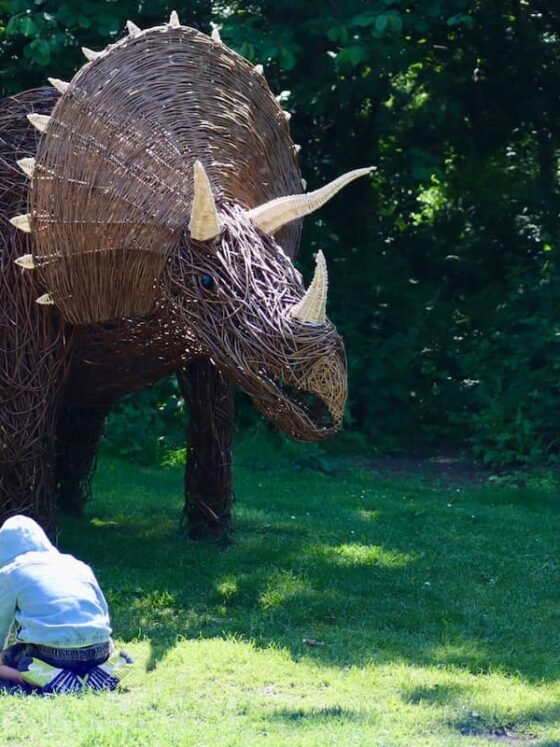
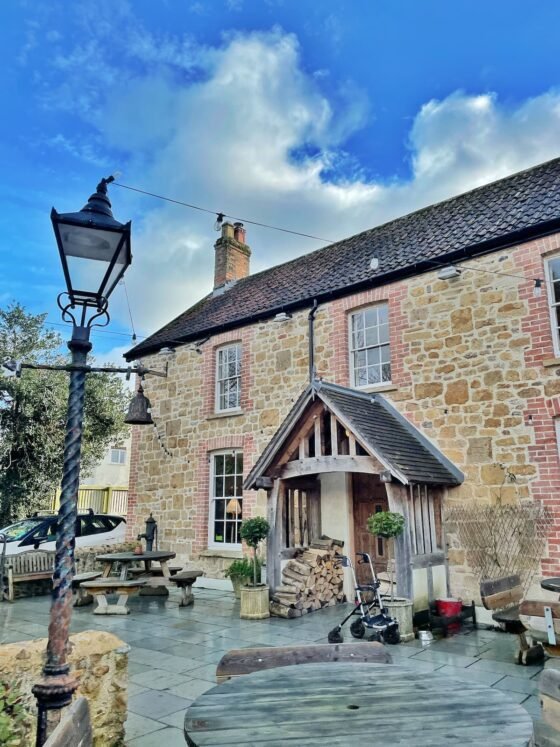





14 Comments